Potřebujeme váš souhlas k využití jednotlivých dat, aby se vám mimo jiné mohly ukazovat informace týkající se vašich zájmů. Souhlas udělíte kliknutím na tlačítko „OK“.
ASTM E2097-00(2014)
Standard Guide for Determining the Impact of Extractables from Non-Metallic Materials on the Safety of Biotechnology Products (Withdrawn 2022)
Automaticky přeložený název:
Standardní Guide pro určení dopadu extraktu z nekovových materiálů o bezpečnosti biotechnologických produktů
NORMA vydána dne 1.12.2014
Informace o normě:
Označení normy: ASTM E2097-00(2014)
Poznámka: NEPLATNÁ
Datum vydání normy: 1.12.2014
Kód zboží: NS-44272
Počet stran: 5
Přibližná hmotnost: 15 g (0.03 liber)
Země: Americká technická norma
Kategorie: Technické normy ASTM
Kategorie - podobné normy:
Anotace textu normy ASTM E2097-00(2014) :
Keywords:
biotechnology products, components, cytotoxicity, extractables, extraction, raw materials,, ICS Number Code 07.080 (Biology. Botany. Zoology),07.100.10 (Medical microbiology)
Doplňující informace
| Significance and Use | ||||
|
4.1 This guide applies to the determination of the safety of non-metallic materials used in contact with biotechnology product containing solutions. Process materials leach low level of residues into water, cell culture media, buffers, and other product containing solutions. This document offers guidance on determining the safety of these materials (process materials) for use. The goal is to prevent toxic extractables from entering process streams and ultimately contaminating the final product in unacceptable levels. 4.2 The purpose of this guide is to describe tests to qualify materials with respect to any extractable substances so as to prevent unintentional introduction of a potential source of objectionable substances. An extractable material is objectionable if it is toxic, interacts with product constituents, interferes with required assays, or otherwise affects the process stream so as to adversely affect critical quality parameters, for example, purity, safety, efficacy, identity, strength of the final product or its successful production. All organizations producing pharmaceutical products should consider the points in this guide when qualifying process materials for use in their production processes. 4.3 This guide outlines the application of the process material tests primarily in ASTM or USP. Typical process materials include high molecular weight polymers and solids such as hoses, filters, filter housings, containers, valve diaphragms, gaskets, o-rings, chromatography resins, and chromatographic columns. 4.4 The battery of tests described in this guide is intended to cover a wide variety of potential attributes of materials and to characterize possible extractables. 4.5 The material specification will vary depending on the impact on the final product and the point in the process that the product solution contacts the material. Tighter specifications should be considered for extractables for final product purification process materials than for fermentation media process materials. |
||||
| 1. Scope | ||||
|
1.1 This guide covers procedures and test methods for process component qualification by the end user. The goal is to assess the safety impact of extractables from non-metallic process components used in contact with bioprocessing solutions. This encompasses the impact of extractables on the safety of the final product as it passes through the various stages of the manufacturing process. This guide is not designed for evaluation of metallic materials, final product container/closures or those components intentionally added to the product or production streams during the manufacturing process. Testing of solids and extracts is specified in other ASTM standards. Materials must be qualified by specific use. 1.2 The values stated in SI units are to be regarded as standard. No other units of measurement are included in this standard. 1.3 There is no companion guide available. 1.4 Safety/Fire Hazards: Extractions with organic solvents will be infrequent under this guide, but, when used must be treated as potential fire/explosion hazards. 1.5 This standard does not purport to address all of the safety concerns, if any, associated with its use. It is the responsibility of the user of this standard to establish appropriate safety and health practices and determine the applicability of regulatory limitations prior to use. |
||||
| 2. Referenced Documents | ||||
|
Podobné normy:
Historická
1.10.2013
Historická
1.3.2013
Historická
1.11.2012
Historická
1.3.2011
Historická
1.3.2011
Historická
1.9.2013
Doporučujeme:
Aktualizace zákonů
Chcete mít jistotu o platnosti užívaných předpisů?
Nabízíme Vám řešení, abyste mohli používat stále platné (aktuální) legislativní předpisy.
Chcete vědět více informací? Podívejte se na tuto stránku.


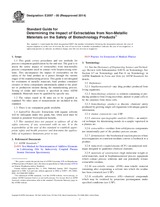
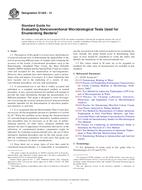 ASTM E1326-13
ASTM E1326-13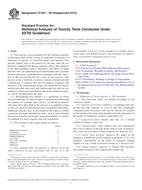 ASTM E1847-96(2013)..
ASTM E1847-96(2013)..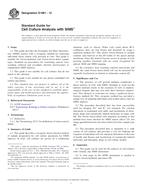 ASTM E1881-12
ASTM E1881-12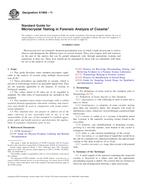 ASTM E1968-11
ASTM E1968-11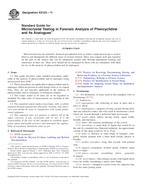 ASTM E2125-11
ASTM E2125-11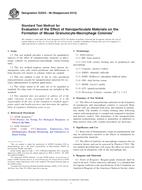 ASTM E2525-08(2013)..
ASTM E2525-08(2013)..
 Cookies
Cookies
